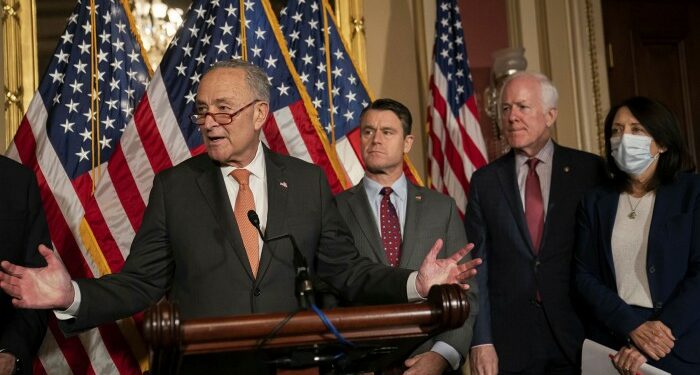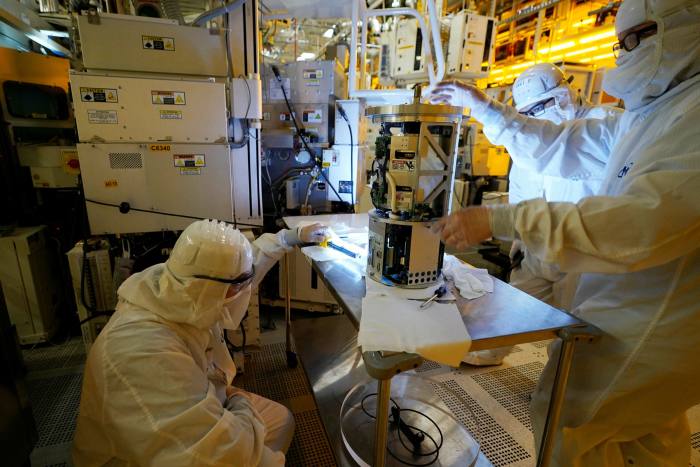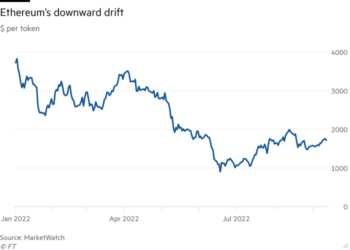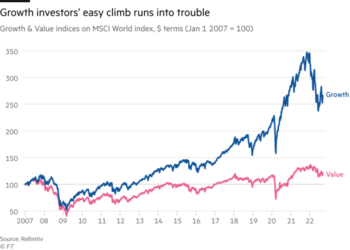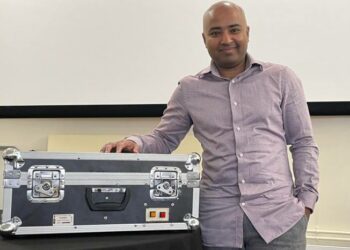The long wait for legislation to boost the US’s position in global semiconductor manufacturing is almost over. The scramble among companies to get their hands on the billions of dollars it unleashes is only just beginning.
The House of Representatives last week followed the Senate in passing a broad law to counter China’s rise as a technology power, including $52bn in grants to support advanced chip manufacturing and research and development in the US. The law, which has yet to be signed, unlocks an estimated $24bn more in investment tax credits for chipmakers by letting them write off 25 per cent of the cost of new factories, or fabs, against their profits in the first year.
Pat Gelsinger, CEO of Intel, said the act may be “the most important piece of industrial policy” in the US since the second world war. It is designed to reverse a decline in the US share of global chip manufacturing to 10 per cent from 38 per cent in 1990.
However, the financial support from Washington is unlikely to stretch across all the giant projects already under construction or on the drawing board in the US.
“It’s not as big as everyone thinks,” said Pat Moorhead, a US chips analyst. With advanced chip manufacturing plants costing more than $10bn, the Department of Commerce, which will be responsible for deciding who gets the money, will face some difficult choices, he said.
The legislation includes $39bn over five years to support the construction of new fabs, with grants of up to $3bn for each project. Another $11bn is set aside for R&D, with $2bn for projects considered important by the Pentagon.
Intel alone hopes to secure $12bn of the construction grants, or nearly a third of the total, for two fabs under construction in Arizona and two more for which it is close to breaking ground in Ohio. Others who have been angling for the money include the two chipmakers that have leapfrogged Intel in recent years to master the most advanced, or “leading-edge”, chip making techniques — TSMC, which is building a $12bn fab in Arizona, and Samsung, which is working on a $17bn facility in Texas. Both plants are due to begin producing chips in 2024.
Although Congress has agreed to make the grants available to foreign companies, domestic chipmakers are lobbying hard to make sure the lion’s share of the money goes to American companies. An executive at one US chipmaker said that the commerce department should favour companies that carry out their R&D in the US and employ the largest number of workers there — things that would clearly favour American companies.
The commerce department has not yet revealed the application process or said how it will pick priorities for taxpayer support.
US officials must also decide how much of the money to allocate to the most expensive, “leading edge” fabs, which supply chips for demanding, high-volume uses like smartphones and PCs. That would mean throwing full support behind Intel, which lost its technological lead in global chip making to TSMC and Samsung and has been investing heavily to claw its way back.
On the same day that the House passed the Chips Act, Intel shocked Wall Street with a slump in its latest quarterly results and said it would cut its capital spending plans for this year by $4bn. However, it did not change longer-term plans for its advanced new fabs. The plants are central to the company’s goal of trying to compete head-on with TSMC by becoming a “foundry” that manufacturers chips on behalf of other companies rather than only to its own designs.
The financial setback last week revived suggestions from some analysts that Intel should abandon its foundry ambitions to focus instead on shoring up its existing business. However, the company has argued that it needs to become a foundry to justify the escalating costs that come with each new generation of manufacturing technology, since its existing business is not big enough to require such large-scale fabs.
Others with big plans to boost US production include memory chipmaker Micron, which has earmarked $150bn for capital spending by 2031. The company has been waiting for the act to become law before giving the go-ahead to a big new plant that it expects will start production in the middle of this decade, according to CEO Sanjay Mehrotra. “It’s not about if these fabs will be built — it’s about where they will be built,” he said.
Memory and storage chips have grown to account for nearly a third of the semiconductor market and Micron has world-leading technology in this field, meaning that it is likely to be seen in the US as a strategic supplier needing extensive government support, said Moorhead.
TSMC is also angling for extensive support to justify its most significant attempt so far to put down roots in the US, where costs are higher than its home base. Chair Mark Liu said in June that the US plant was turning out to be “more costly” than TSMC had expected and that a shortage of chip manufacturing talent was causing the company problems.
Morris Chang, the TSMC founder, said earlier this year that the erosion of US chip manufacturing expertise over a number of decades had make it extremely hard for the country to regain global competitiveness. Speaking in an interview with the Brookings Institution, he said that had made the Chips Act “an expensive exercise in futility”.
While the US is under pressure to regain its edge in leading-edge chipmaking, the commerce department must also decide how much cash to set aside for older process technologies that still play a central role in many chip markets. Many industrial and car-making customers, as well as the Pentagon, use chips that are produced in lower volumes to their own specifications and which do not need to meet the most demanding low-power standards.
SkyWater Technology, a chip foundry based in Indiana, in July announced plans for a new $1.8bn fab to produce chips using older technology. Tom Sonderman, CEO, said the plant would support a wide range of industrial customers using facilities on US soil. The fab would only go ahead if it can win substantial official backing, with a third of the cost from Federal government and another third from state support, he added.


